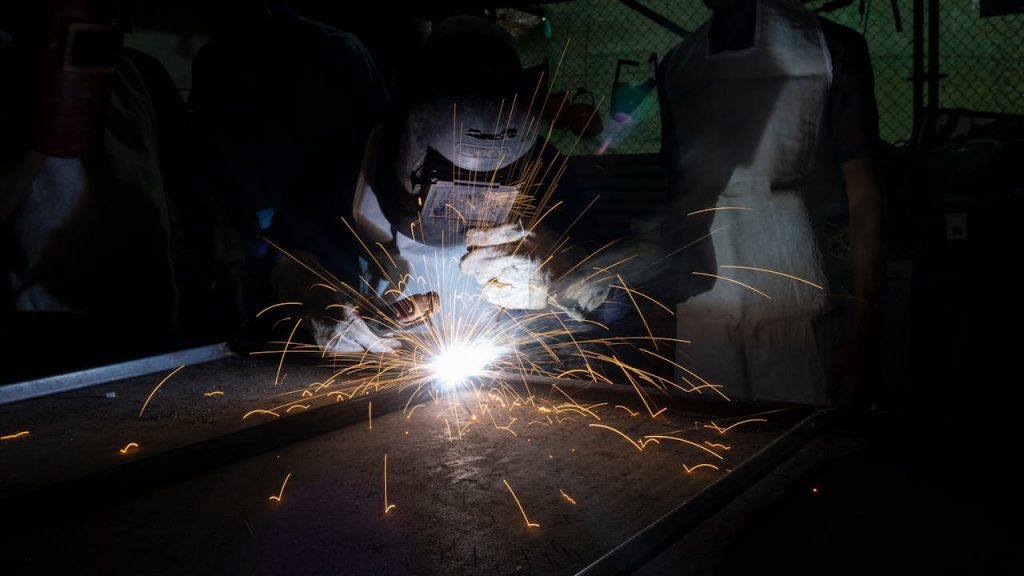Challenges for SMEs when automating
When it comes to being a small and medium-sized manufacturing company, there are a lot of challenges that you have to face. These challenges can range from competing with large manufacturing firms, which have more resources and support or trying to improve productivity and maintain a quality standard. One way for these companies to solve these problems is by trying to automate their production line. However, there are still other problems that come with this solution. So, in this article, we will discuss a few of the popular challenges for manufacturing SMEs and possible solutions they can try to overcome them. For those interested in this subject, read on to learn more about it.
Employee shortage
One big challenge that most SMEs need to face is the shortage of employees in the manufacturing industry. This is also a major global problem. In fact, 34% of entrepreneurs say that finding qualified personnel is the largest obstacle in their business operations. Additionally, compared to a few years ago, it is getting even harder to find the right kind of talent. Moreover, demographic factors also play a role in this issue. For example, a large proportion of the production workforce tends to be 55 years or older. On the other hand, there is little young staff being added to the workforce. This means that when some staff needs to retire, they tend to not be replaced quickly enough.
Another thing that has exacerbated this issue is that employee desires have shifted over the years. Compared to the past, most employees now desire a modern, digital work environment. Most of the younger workforce tend to be digital natives who have experience in a lot of digital software and automation. This desire is something that most SMEs find hard to meet due to the complexity and cost of traditional automation software and other digital solutions.
Fortunately, when it comes to this problem, collaborative robots (cobots) can help with this in several ways. Not only do they make up for staff shortages land take certain repetitive tasks off human workers, but they can also increase productivity and give employees the chance to do other more creative and strategic work. Furthermore, cobots are easy to operate, meaning even older employees can quickly learn to operate them whenever possible. Cobots are also generally more cost-effective than other traditional automation solutions, like industrial robots.
Quality improvement
One way to stay competitive s improving the quality of production and your products. This is because customer satisfaction will increase, in addition to prices becoming more manageable. Customers that are more satisfied with your products are also likely to become loyal and repeat customers. In addition, improving your production quality reduces waste, which means lowering overall costs. Cobots are generally used to automate the quality inspection process and testing. This is because they can be outfitted with sensors and vision technology like cameras. These tools can spot blemishes and scratches that the human eye may have a hard time finding. As such, these robots tend to take over inspection tasks from human operators, leading to higher reliability. Cobots can also be programmed to do the same tasks over and over again, without deviating from them. Humans cannot do this, as we are not perfect, and doing repetitive tasks can result in human errors, especially when human workers become bored. As such, cobots are the ideal solution when it comes to improving the quality and standard of your products.
Supply issues
In the last few years, supply chains in a variety of industries have been disrupted by ongoing current events. Recovery is also slightly slow. So, this means for many parts and products, demand exceeds supply. This causes the gap between production and orders to widen. The shortage of skilled personnel is also exacerbating this issue. As a result, most people are focusing on shipping and producing things locally rather than overseas. This is because products that are produced locally mean that the supply is closer to the consumers, meaning there will be fewer chances of a long delay.
For many SMEs, this is a good opportunity for them to branch into, provided they have the manpower and capabilities to do so. As such, they can use cobots to ramp up local production with already existing and local resources, without immediately gaining large costs.
Staying competitive
This is no doubt a recurring challenge for many companies out there. As a result of this, many companies worldwide are now optimizing their processes in order to increase productivity and efficiency and reduce costs wherever possible. This is where automation and digitization play their part. However, SMEs tend to not be suited to these kinds of traditional automation options as a result o their large costs and complexity to set up. So, most SMEs have been left behind in regard to staying competitive.
On the bright side, cobots are a great solution that SMEs can use, not only because of their user-friendly software but also because they are not as complex as traditional automation software. This means their costs and time taken to set up are relatively lower.

